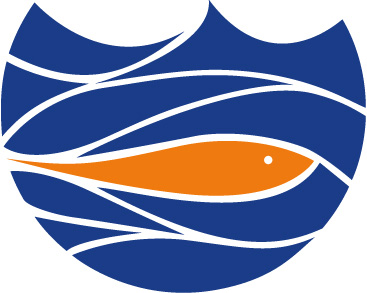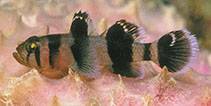http://www.fishbase.org/Summary/speciesSummary.php?genusname=Priolepis&speciesname=nocturna ---> http://192.134.151.83/Summary/speciesSummary.php?genusname=Priolepis&speciesname=nocturna
http://192.134.151.83/Summary/speciesSummary.php?genusname=Priolepis&speciesname=nocturna ---> https://fishbase.mnhn.fr/Summary/speciesSummary.php?genusname=Priolepis&speciesname=nocturna
https://fishbase.mnhn.fr/Summary/speciesSummary.php?genusname=Priolepis&speciesname=nocturna ---> https://fishbase.mnhn.fr/summary/Priolepis-nocturna.html
Priolepis nocturna, Blackbarred reefgoby

You can
sponsor
this page
Common name (e.g. trout)
Genus + Species (e.g. Gadus morhua)
-

-
About this page
-
Languages
-
User feedbacks
-
Citation
-
Uploads
-
Related species
-


 Blackbarred reefgoby
Add your observation in
Fish Watcher
Upload your
photos
and
videos
Blackbarred reefgoby
Add your observation in
Fish Watcher
Upload your
photos
and
videos
Pictures
|
Google image
 Priolepis nocturna
Priolepis nocturna
Picture by
Allen, G.R.
Teleostei (teleosts) >
Gobiiformes
(Gobies) >
Gobiidae
(Gobies) > Gobiinae
Etymology:
Priolepis:
Greek, prio = to saw + Greek,lepis = scale (Ref.
45335
)
;
nocturna:
Name from Latin
nocturnus
meaning 'of the night', presumed to refer to Smith's belief (1956:725) that this species lives a '.. Sheltered life in coral, almost certainly where the light is of low intensity.'; considered an adjectival form of
nox
and cannot be regarded as a noun (Ref.
9018
)
.
More on author:
Smith
.
Environment: milieu / climate zone / depth range / distribution range
Ecology
Marine; reef-associated; non-migratory; depth range 8 - 30 m (Ref.
90102
). Tropical
Indo-Pacific: Seychelles and the Maldive to the Marquesas, including the Philippines and Phoenix Is.
Size / Weight / Age
Maturity: L
m
?
range ? - ? cm
Max length : 3.9 cm SL male/unsexed; (Ref.
9360
)
Dorsal
spines
(total): 7;
Dorsal
soft rays
(total): 10;
Anal
spines
: 1;
Anal
soft rays
: 8. This species is distinguished by the following characters: no fraenum; lateral line scale series 28 or more; pectoral fin rays 20 or more; nape and body with 4 broad dark bars on a light background; anterodorsal region of the caudal fin with an ocellated eye-sized dark spot (Ref.
9018
); characterized further by having a pair of bands below eye; large partially ocellated black spots on both dorsal fins; ctenoid body scales to level of second dorsal spine, cycloid anteriorly, including base of pectoral fin, breast and ventrally on abdomen; head and median part of nape without scales; side of nape to above middle of opercle with small embedded scales; cheek without vertical row of papillae; depth of body 4.1 in SL (Ref.
90102
).
Inhabits coral reef crevices in 8-30 m (Ref.
90102
).
Life cycle and mating behavior
Maturity
|
Reproduction
|
Spawning
|
Eggs
|
Fecundity
|
Larvae
Randall, J.E. and M. Goren
, 1993. A review of the gobioid fishes of the Maldives. Ichthyol. Bull. J.L.B. Smith Inst. Ichthyol. (58):1-37, 5 pls. (Ref.
9360
)
IUCN Red List Status (Ref.
130435
)
Least Concern (LC)
; Date assessed:
12 March 2015
CITES
Not Evaluated
Not Evaluated
Threat to humans
Harmless
Human uses
FAO - Publication:
search
|
FishSource
|
More information
Countries
FAO areas
Ecosystems
Occurrences
Introductions
Stocks
Ecology
Diet
Food items
Food consumption
Ration
Common names
Synonyms
Metabolism
Predators
Ecotoxicology
Reproduction
Maturity
Spawning
Spawning aggregation
Fecundity
Eggs
Egg development
Age/Size
Growth
Length-weight
Length-length
Length-frequencies
Morphometrics
Morphology
Larvae
Larval dynamics
Recruitment
Abundance
BRUVS
References
Aquaculture
Aquaculture profile
Strains
Genetics
Electrophoreses
Heritability
Diseases
Processing
Nutrients
Mass conversion
Collaborators
Pictures
Stamps, Coins Misc.
Sounds
Ciguatera
Speed
Swim. type
Gill area
Otoliths
Brains
Vision
Tools
E-book
|
Field guide
|
Length-frequency wizard
|
Life-history tool
|
Point map
|
Classification Tree
|
Catch-MSY
|
Special reports
Check for Aquarium maintenance
|
Check for Species Fact Sheets
|
Check for Aquaculture Fact Sheets
Download XML
Summary page
|
Point data
|
Common names
|
Photos
Internet sources
AFORO (otoliths) |
Aquatic Commons
|
BHL
|
Cloffa
|
BOLDSystems
|
Websites from users
|
Check FishWatcher
|
CISTI
|
Catalog of Fishes
:
genus
,
species
|
DiscoverLife
|
ECOTOX
| FAO - Publication:
search
|
Faunafri
| Fishipedia |
Fishtrace
| GenBank:
genome
,
nucleotide
| GloBI |
Google Books
|
Google Scholar
|
Google
| IGFA World Record |
MitoFish
|
Otolith Atlas of Taiwan Fishes
|
PubMed
|
Reef Life Survey
| Socotra Atlas |
Tree of Life
| Wikipedia:
Go
,
Search
| World Records Freshwater Fishing |
Zoological Record
Estimates based on models
Preferred temperature (Ref.
123201
): 26.2 - 28.9, mean 27.7 °C (based on 176 cells).
Phylogenetic diversity index (Ref.
82804
): PD
50
= 0.5000 [Uniqueness, from 0.5 = low to 2.0 = high].
Bayesian length-weight: a=0.01023 (0.00477 - 0.02194), b=3.02 (2.84 - 3.20), in cm total length, based on LWR estimates for this (Sub)family-body shape (Ref.
93245
).
Trophic level (Ref.
69278
): 3.2 ±0.3 se; based on size and trophs of closest relatives
Resilience (Ref.
120179
): High, minimum population doubling time less than 15 months (Preliminary K or Fecundity.).
Fishing Vulnerability (Ref.
59153
): Low vulnerability (10 of 100).
Back to Search
Random Species
Back to Top
Accessed through:
Not available
FishBase mirror site :
localhost
Page last modified by :
mrius-barile
- 20 July 2016
Fatal error
: Uncaught ArgumentCountError: Too few arguments to function checkEcotox(), 1 passed in /var/www/html/summary/speciessummary.php on line 2304 and exactly 3 expected in /var/www/html/includes/speciessummary.lib.php:2579 Stack trace: #0 /var/www/html/summary/speciessummary.php(2304): checkEcotox() #1 {main} thrown in
/var/www/html/includes/speciessummary.lib.php
on line
2579
|